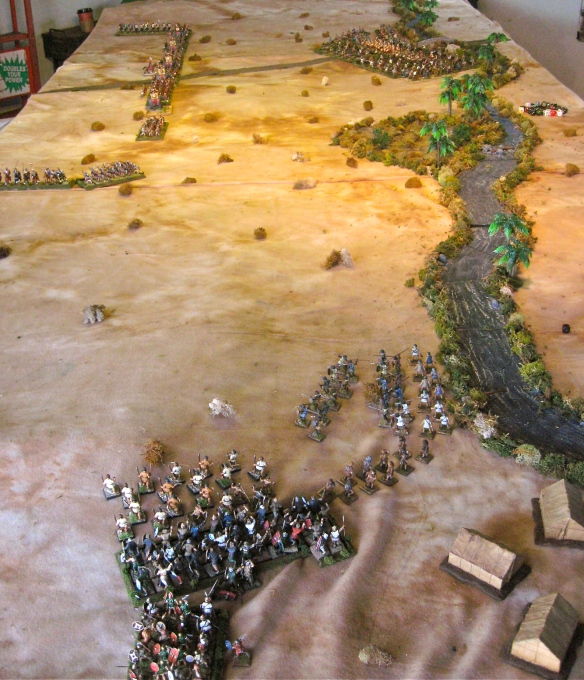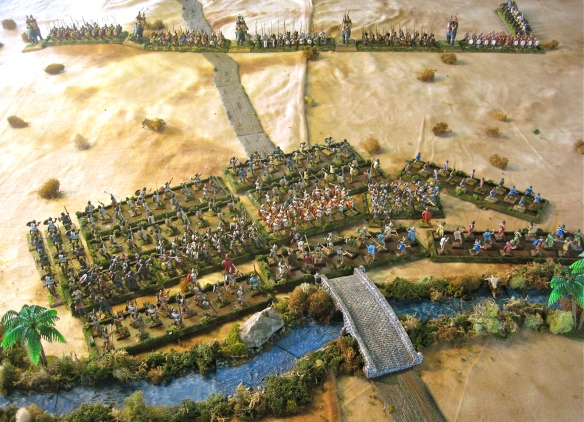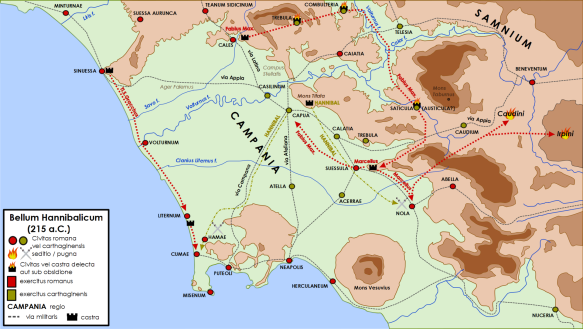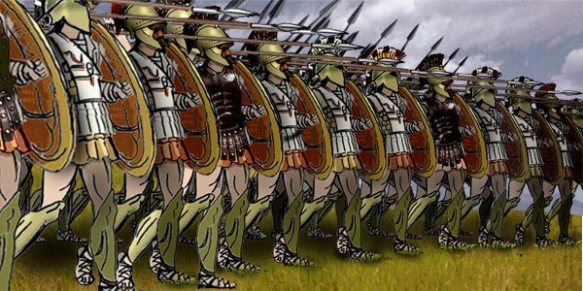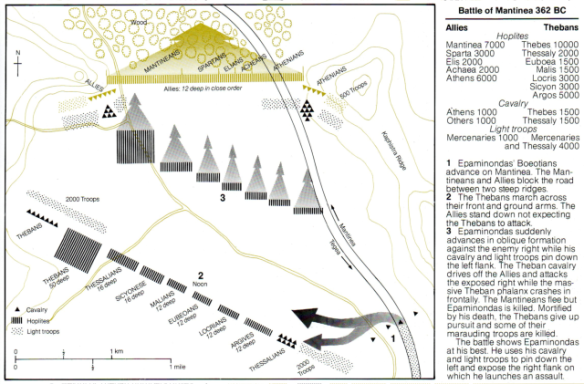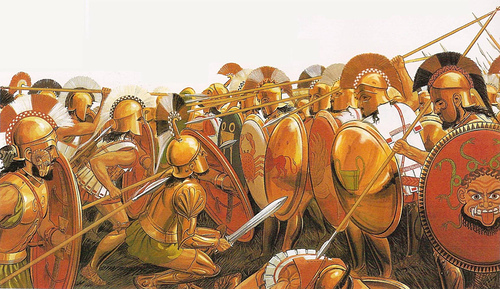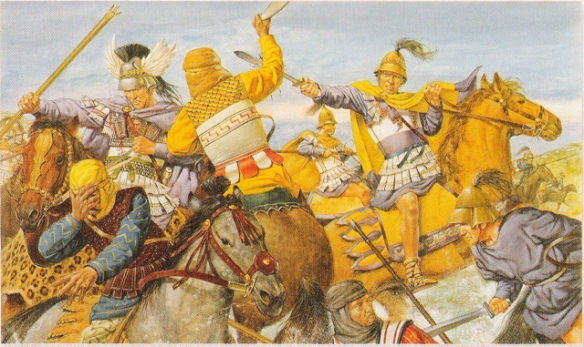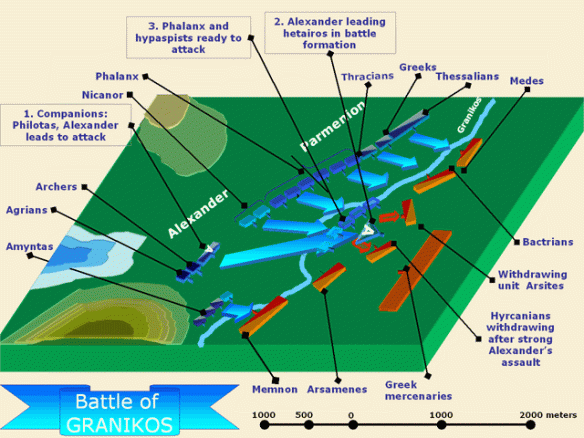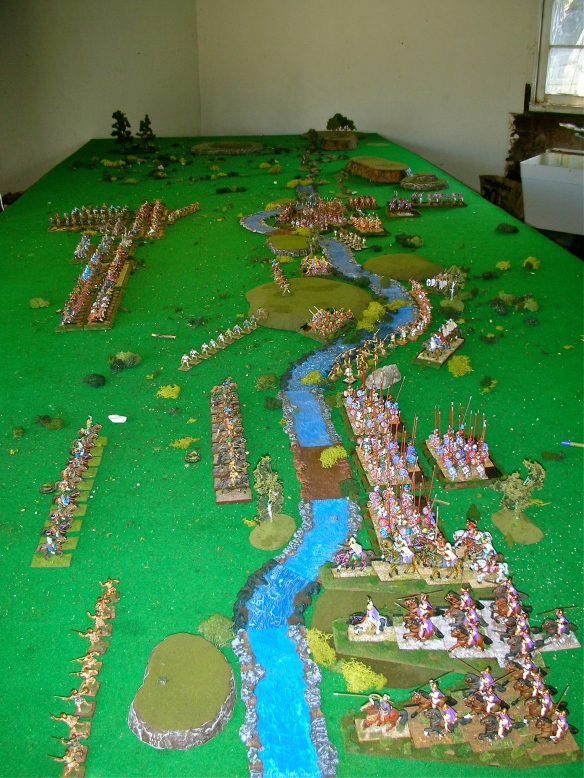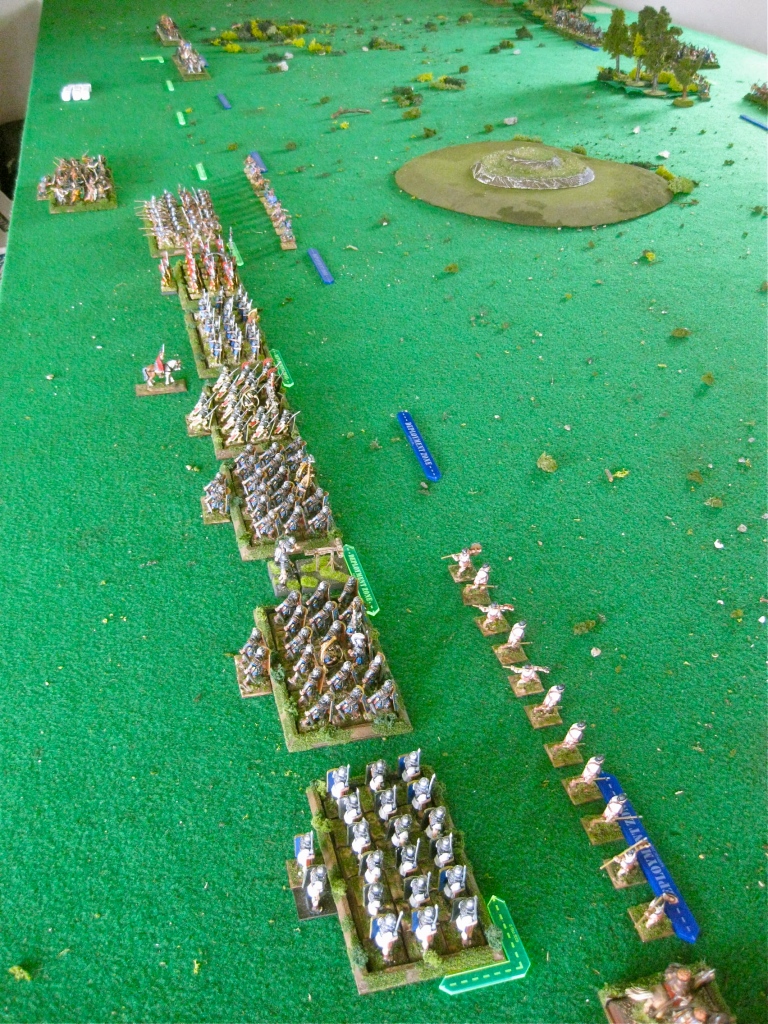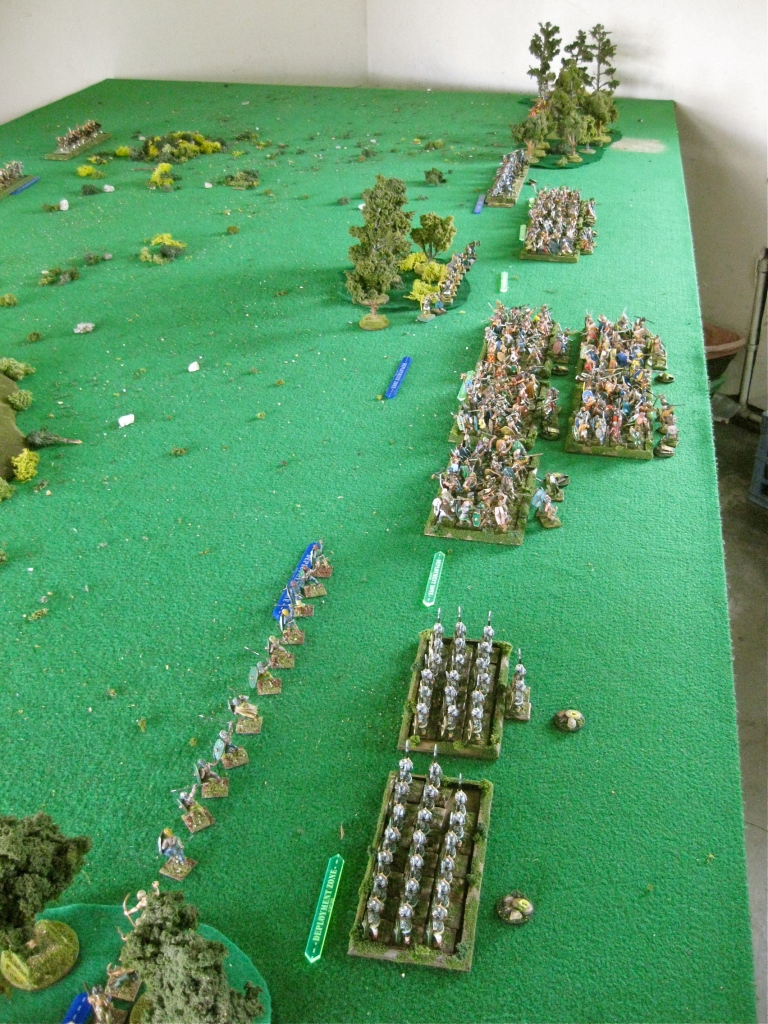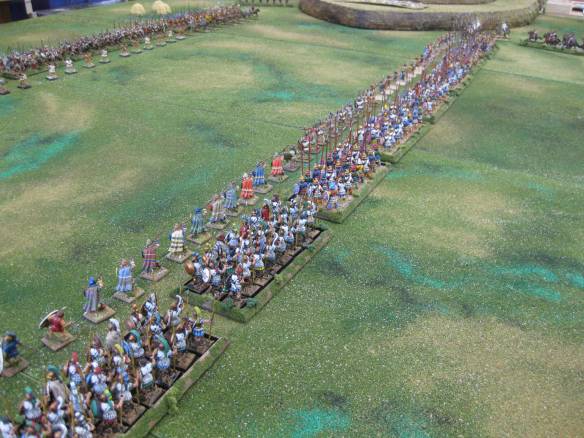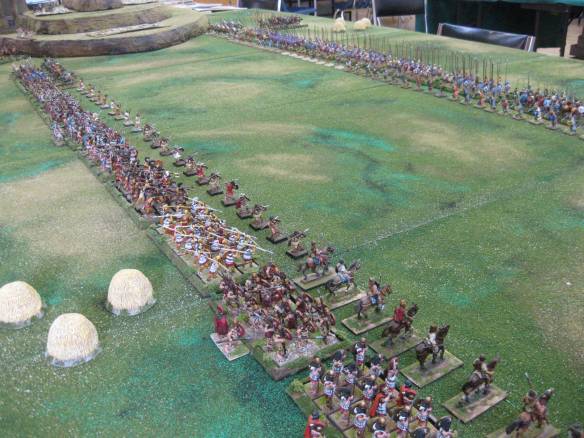Opening scenario game for Year 2021 at the warren. First Saturday of January, the warren game room staged the Clash of Empires (COE) 28mm historical Battle of Dara 530 AD, displaying John’s newly painted Sassanids vs. the Late Romans (Byzantine) collections of David and WR. Seven players came to the game warren, two travelled down from the central valley region of California, two up from Long Beach.
You Tube Battle of Dara 530 AD Part II link. A 14 minute video showing the battle plans and conflict outside the city walls of Dara in530 A.D.. This is a two part video, the first part discusses the ancient political scene, before the battle, between the two empires if interested.
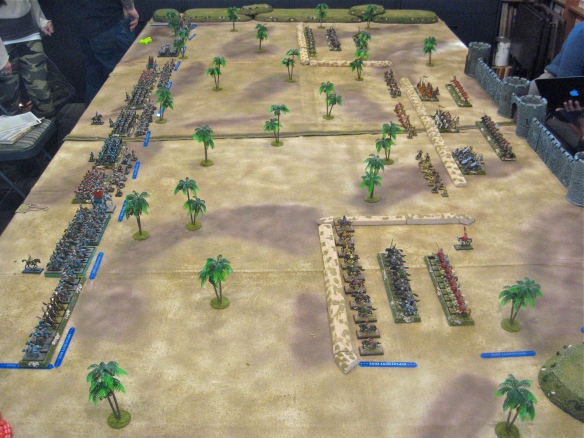
The opening scenario with both armies deployed upon the desert tabletop. Persian Sassanids at left, the late Romans and city walls of Dara at right. Table size 12’x6′. Seven players ready to go.
Army Rosters: First the Sassanids with COE 5,665 points in their field army deployed before Dara: Sassanid Roster Dara 530AD (.xls) file with unit data, weapons, morale etc..
Unit of Zhayedan Immortal (12x miniatures) cavalry.
Four units of Savaran (Clibanarii) (12x or 10x) cavalry each.
Parthian horse archers (12x) cavalry.
Three units of Persian / Median infantry (28x) each with half bow / spear formation.
Two units of Paighan spear infantry (24x) each.
Three units of Persian archer skirmishers (15x) each.
Unit of Subject slingers (10x).
Three Indian elephants / howdah and two archer crewmen each.
The Late Roman or Byzantine army fielded a smaller force overall at COE 4,666 points: Late Roman Roster Dara 530AD (.xls) file with unit data, weapons, morale etc..
Unit of Bukellari Bodyguard (12x miniatures) cavalry.
Unit of Bukellari (12x) cavalry.
Unit of Comitatensis (10x) cavalry.
Three more Comitatenses (10x) cavalry each.
Heruli (10x) cavalry (flanking unit).
Hun cavalry skirmishers (10x).
Massagetae cavalry skirmishers (10x).
Three Limitani infantry (22x) each, with spear and bow mixture.
Three Psiloi skirmisher infantry (12x) each; two units w/bow, one w/javelin.
City wall Psiloi archers (20x) manning the Dara walls.
Deployment: Deployments for both sides followed the historical record, just allowing the Late Roman or Sassanid player teams to shift specific units, but not types of units, in their right, central, and left flank zones. Sassanid army had to divide their cavalry units between the two flanks and place all infantry in the center of their battle line. Only the Sassanid elephants had freedom of zonal deployment. For the Late Roman army a similar deployment with two exceptions. The Heruli cavalry is placed in ambush (see ambush rule below) and the Bukallari Bodyguard cavalry, with one other cavalry unit, placed before Dara city walls, behind all the Late Roman infantry likewise placed in the center. The remaining Late Roman cavalry is then equally divided between the two flanks, deployed behind the trench or ditch position. Review the following deployment photographs for more clarity.

